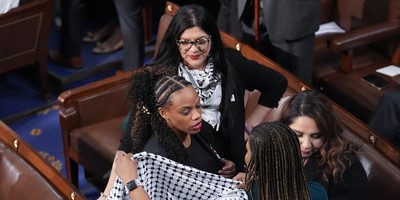We opened the week on Obamacare, so let's close up shop on the same topic. Via Philip Klein:
In recent weeks, large insurers selling coverage through Obamacare have proposed massive rate increases for 2016 – even exceeding 40 percent – because they haven't been able to sign up enough young and healthy customers. This is an ominous sign for the future of Obamacare, because two federal programs that were supposed to act as training wheels for insurers in the early years of Obamacare by absorbing excess risk are set to expire after 2016. If insurers don't do a better job of attracting a healthier risk pool, 2017 promises to be a rocky year for insurance markets, regardless of which party is in control of the White House. In the first two years of the implementation of Obamacare's insurance exchanges (2014 and 2015), insurers set rates with the expectation that the government would absorb a certain degree of risk and they made assumptions about the medical costs of their enrollees. Now that insurers have had more time to look at the claims coming in from those enrolling from Obamacare, they're finding that the pool of customers is older and sicker than originally projected, driving up medical costs...
Advertisement
Klein notes that "bailout"-style safety net payments for insurers aren't meeting expectations, and echoes what experts have been predicting: Once those programs sunset, premiums are likely to jump even higher. He walks through some of the 2016 data:
CareFirst BlueCross BlueShield, the largest health insurer in Maryland, proposed an average increase of 30.4 percent for 2016 (with a range of 19.3 percent to 45.7 percent). A similar story is playing out among insurers who have filed rate proposals throughout the country. BlueCross BlueShield of Tennessee asked for an average increase of 36.3 percent. In South Dakota, Wellmark proposed a 42.9 percent average increase. In Oregon, Moda Health, which serves roughly half of the state's individual market, is aiming to raise rates by an average of 25.6 percent.
Senate Republicans are highlighting double-digit spikes across the country. Klein quotes the always-insightful Bob Laszewski, who puts the new data into context:
"What we are seeing is a mixed bag in terms of how carriers are responding to their 2016 rates. There seems to be a trend growing where carriers with the largest market share are coming out with the eye-popping increases. Carriers with the least share are still coming in with the smaller increases." Part of this might be that in the first two years of Obamacare, when they were expecting more federal help, larger insurers were able to offer "teaser rates" to rapidly build up their market share, but now that they have access to more data, they're increasing their rates. Larger insurers, he noted, have access to more data. "The key to getting a insurance risk pool that eventually supports lower rates is to attract as many people into it as possible," Laszewski said. "Lower rates will attract more people and provide a better chance of getting more sustainable rates." But, he said, "even with the lower rates the Obamacare reinsurance program enabled, only about 40 percent of those eligible eventually signed up after two full open-enrollments. Carriers need more like 75 percent of an eligible pool to get the most efficient pool. Things just haven't worked out."
Recommended
Advertisement
"Things just haven't worked out" sounds like a plausible slogan for the law. Klein notes that based on the administration's own data, sign-ups among healthy young adults are nowhere near White House projections, and that overall enrollment is lagging far behind the pace needed to hit stated goals. Avik Roy has examined Obamacare supporters' spin on "new" enrollments, and finds it wanting. I'll leave you with this:

























Join the conversation as a VIP Member